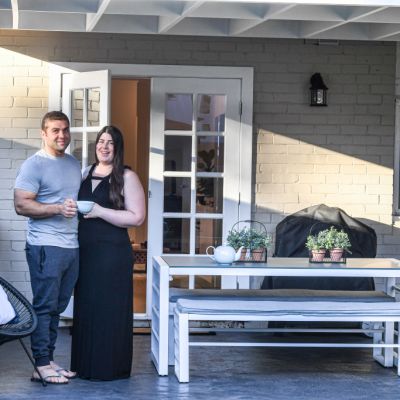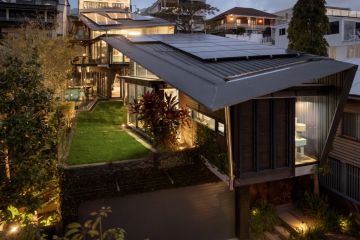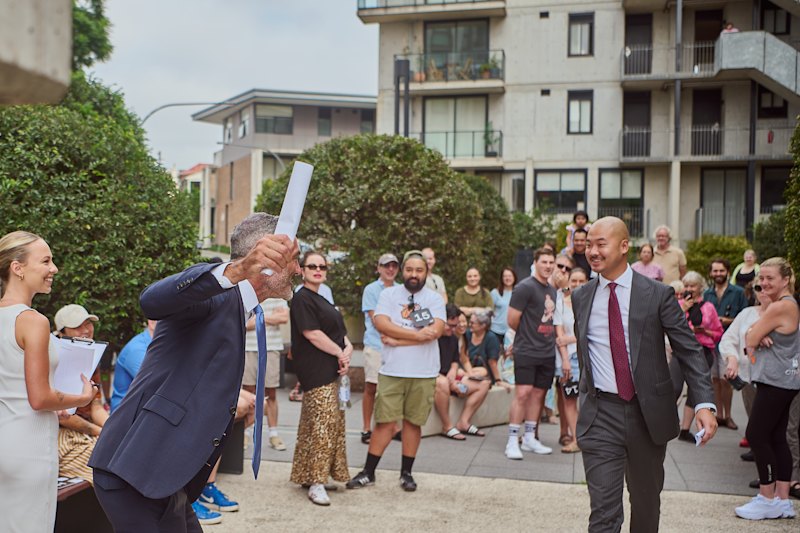Australia's house prices are up but the effect of coronavirus has yet to take hold

House prices in all of Australia’s capital cities increased or held steady in the first part of this year, a new report shows, but experts say the full effect of the coronavirus on the property market is yet to be seen.
Sydney, Hobart and Melbourne saw the largest price increases for the March quarter, with house prices jumping by between 2 and 2.6 per cent, the Domain House Price Report released on Thursday revealed.
Darwin, Canberra and Brisbane recorded house price gains between 0.3 and 1.2 per cent, while prices in Perth and Adelaide were flat.
Domain senior research analyst Nicola Powell said while house price results were positive for the quarter, more recent data observations painted a different picture.
Dr Powell said COVID-19 restrictions including bans on in-person auctions and public inspections, along with economic uncertainty and increasing unemployment, had seen more vendors reduce their asking prices during February and March.
“We have seen a rise in the number of listings with their asking prices revised, but the actual percentage decline has remained relatively the same,” Dr Powell said. “It’s a bit uncertain to what extent prices will fall.”
She said the number of new properties being listed for sale had started to decline in mid-March, but that it did not necessarily mean prices would dramatically decline.
“A drop in listings is going to be counterbalanced by a drop in buyer activity,” Dr Powell said. “That will help to provide a support for prices.”
She said wage subsidies, mortgage holidays and record low interest rates meant price falls would not be as significant as they otherwise could have been.
“During this shutdown period I think what we’ll see is pent-up demand, and what we’re likely to see at the end of this is a strong recovery.”
| MEDIAN HOUSE PRICE MARCH 2020 | |||||
| Capital City | Mar-20 | Dec-19 | Mar-19 | Quarterly change | Annual change |
| Sydney | $1,168,806 | $1,139,281 | $1,032,974 | 2.6% | 13.1% |
| Melbourne | $918,350 | $900,551 | $815,495 | 2.0% | 12.6% |
| Brisbane | $584,778 | $581,077 | $572,717 | 0.6% | 2.1% |
| Adelaide | $542,418 | $542,418 | $535,210 | 0.0% | 1.3% |
| Canberra | $779,050 | $776,363 | $746,470 | 0.3% | 4.4% |
| Perth | $527,322 | $527,323 | $532,660 | 0.0% | -1.0% |
| Hobart | $514,097 | $503,125 | $470,292 | 2.2% | 9.3% |
| Darwin | $494,281 | $488,326 | $514,546 | 1.2% | -3.9% |
| National | $819,860 | $806,325 | $752,646 | 1.7% | 8.9% |
Source: Domain House Price Report
Real Estate Institute of Australia president Adrian Kelly agreed low buyer demand would counteract low listing numbers, meaning house prices would not fall significantly.
“We probably won’t see too many forced sales, because people who have lost their jobs won’t be taken to task by the banks,” Mr Kelly said. “If we do see a reduction in house values, it will look worse than what it is because of the low volume of sales.”
AMP Capital chief economist Shane Oliver said the March quarter saw a continuation of the uptick in property prices after the federal election in 2019, as proposed changes to negative gearing were quashed – particularly in Sydney and Melbourne.
“It was probably also a bit of FOMO – people who were thinking of buying through the course of 2019 and suddenly finding prices getting away from them,” Dr Oliver said.
The median house price in Sydney hit $1,168,806, while Melbourne’s median climbed to $918,350 – putting it back to where it was before the 2017 downturn. Hobart’s median house price reached $514,097.
Darwin, Canberra and Brisbane’s medians were $494,281, $779,050 and $584,778 respectively, while prices in Perth and Adelaide stayed at $527,322 and $542,418 respectively.
Unit prices increased in Sydney, Adelaide and Perth, but declined by up to 8.1 per cent in Melbourne, Brisbane, Canberra and Darwin. The median unit price in Hobart stayed flat.
| UNIT MEDIANS MARCH 2020 | |||||
| Capital City | Mar-20 | Dec-19 | Mar-19 | QoQ | YoY |
| Sydney | $744,672 | $725,377 | $686,540 | 2.7% | 8.5% |
| Melbourne | $554,306 | $556,428 | $487,286 | -0.4% | 13.8% |
| Brisbane | $374,054 | $390,309 | $392,009 | -4.2% | -4.6% |
| Adelaide | $323,846 | $310,706 | $320,185 | 4.2% | 1.1% |
| Canberra | $441,055 | $465,112 | $460,919 | -5.2% | -4.3% |
| Perth | $348,535 | $342,959 | $340,619 | 1.6% | 2.3% |
| Hobart | $431,842 | $431,842 | $393,344 | 0.0% | 9.8% |
| Darwin | $262,562 | $285,827 | $313,462 | -8.1% | -16.2% |
| National | $570,229 | $564,925 | $530,845 | 0.9% | 7.4% |
Scorce: Domain House Price Report
Dr Oliver said COVID-19 restrictions would effectively bring the housing market to a halt over April and May.
“We are going to see a sharp reduction in transactions. In China, property sales went to zero through the month of February – they’ve picked up ever since the economy opened up again,” Dr Oliver said.
He said in a traditional recession, he would expect property prices to fall by up to 20 per cent, but that measures including mortgage holidays and JobKeeper meant fewer people would be forced to sell their homes – causing both supply and demand to slow.
“It makes it a bit confusing to work out precisely how much prices will come down, I think they will probably come down, but it depends on how long the shutdowns go for.”
He said if the lockdown measures were rolled back before the proposed six-month period, the housing market could bounce back relatively well.
“The price decline could be limited to around 5 or 10 per cent,” he said. “We’ll give up the gains we got from the middle of last year.”
He said Sydney and Melbourne were likely to be the hardest hit, as both cities had high levels of supply particularly in the apartment market.
“There’s still a huge overhang of cranes around,” he said. “Those are markets where the debt-to-income ratios are the highest and the price-to-income ratios are the highest.”
Dr Powell said Canberra and Adelaide were likely to hold up well during the pandemic, the former because of its high proportion of government workers – thus far mostly unaffected by job losses – and the latter due to its typically stable market.
“Adelaide is somewhat insulated from a downturn in terms of foreign buyers and investors, it’s largely an owner-occupier market,” she said.
Perth could also come through relatively unscathed, Dr Powell said, as mining and agriculture activities had not been as badly affected as other industries.
“The cities that have a broad economic base are likely to be more cushioned through this downturn than those that are more heavily reliant on tourism or education,” she said.
Dr Oliver said if Australia were to eradicate the virus, it could be a long time before people were allowed or felt comfortable enough to holiday overseas, meaning Australian holiday destinations including Tasmania and Queensland could eventually benefit from an influx of domestic tourists.
“It could be a positive benefit for regional parts of Australia, smaller cities, the Gold Coast and so on where Australians think, ‘I don’t want to go overseas, I’ll just have my annual holiday here’,” he said.
We recommend
We thought you might like
States
Capital Cities
Capital Cities - Rentals
Popular Areas
Allhomes
More







